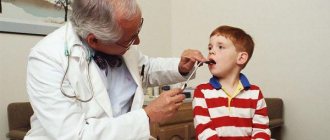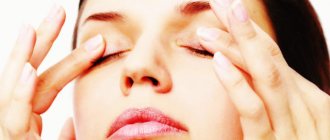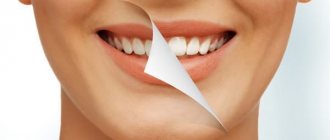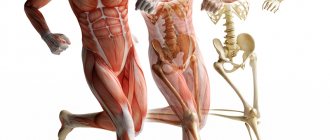candidiasis in children is an infectious dental disease caused by fungal microflora (microorganisms belonging to the genus Candida). According to WHO statistics, manifestations of this pathology are observed in 5% of newborns and 10% of infants. Illness in pediatric dentistry can be chronic or acute. In this case, candidiasis can act as an independent dental pathology or be one of the signs of severe systemic diseases.
1.General information
In order not to be interrupted by terminological references in the future, we will stipulate the following as a kind of preamble.
Opportunistic is an infection that occurs, literally, “at an opportunity,” “if possible,” i.e. under a certain combination of conditions favorable for the opportunistic microorganism. In turn, conditional pathogenicity implies asymptomatic parasitism or commensalism (harmless coexistence) of any microculture in the host’s body - as long as the host is healthy and immunocompetent - and the ability of this culture to undergo rapid pathogenic activation with a weakening of the immune defense, a significant change in the structure of the microbiome and some other circumstances.
Mycosis is a systemic infection by fungal cultures. Candidiasis is an extremely widespread (in fact, the most common) variant of mycosis, caused by yeast-like opportunistic fungi of the numerous genus Candida, most often Candida ablicans (the causative agent, in particular, of urogenital “thrush”).
Thus, pharyngeal candidiasis is an opportunistic mycosis caused by the activation of Candida and predominantly localized in one of the ENT organs.
A must read! Help with treatment and hospitalization!
Causes of oral candidiasis
The main reason for the occurrence is a decrease in immune status, as a result of which the uncontrolled proliferation of microflora begins. Reduced immunity is observed in older people and infants, in patients suffering from HIV, AIDS and other diseases associated with immunodeficiency, in those who regularly expose the body to excessive stress, neglect the rules of a healthy diet and violate work and rest patterns. Risk factors include reasons such as:
- Use of medications.
Taking antibiotics, immunosuppressants (drugs that suppress the immune system) and some other medications leads to disruption of the immune system and the natural balance of microflora in the body. Oral contraceptives, which affect hormonal levels, have a similar effect. - Pregnancy.
During pregnancy, a sharp and significant change in hormonal levels occurs, which can lead to a surge in the activity of pathogenic and opportunistic microflora. - Radiation and chemotherapy.
Often occurs in patients undergoing drug and radiological treatment for cancer. - Injuries to mucous membranes.
Violation of the integrity of the mucous membranes leads to loss or deterioration of the barrier function, as a result of which the fungus enters deep into the tissues, causing inflammation and other symptoms. Small, but constantly recurring injuries are especially dangerous - for example, when wearing incorrectly fitted dentures or braces. - Overwork and stress.
Prolonged stress of physical and mental forces leads to a deterioration in the protective function of the body. Similar consequences are caused by hypothermia or overheating, regular lack of sleep, insufficient, excessive or simply unbalanced nutrition, abuse of alcohol, nicotine, and narcotic substances. - Hypo- and vitamin deficiency.
May be caused by a lack of nutrients, in particular vitamins B and C. - Somatic diseases.
Frequent companions of candidiasis include tuberculosis, dysbacteriosis and other pathologies of the gastrointestinal tract, diseases of the adrenal glands and other endocrine glands. Candidiasis is a contagious disease. A large number of pathogenic microorganisms are transmitted through kissing and sexual contact, through the use of shared dishes, towels and other household items. Infection can also occur during childbirth (vertical transmission from mother to fetus). In addition, there is a risk of infection through contact with infected pets.
2. Reasons
In the clinic of infectious diseases, the main and universal cause, as well as a risk factor, is weakened immunity - no matter what causes the decrease in the body’s natural defenses. However, since the mid-twentieth century, another factor has appeared (and continues to gain strength), which is extremely “convenient” and favorable specifically for fungi. We are talking about antibiotics, which are often used as self-medication, in irrational doses, for too long a course, or in situations where antibacterial drugs are objectively not needed at all.
Suppression or destruction of bacterial microflora, including those that perform protective functions as a symbiont (it should be noted here that broad-spectrum antibiotics are not named this way by chance), disrupts the optimal balance in the microecological system of the human body, and fungi begin to occupy the vacated niche. According to modern estimates, fungal infections of the oral cavity and pharynx account for 40% of all mycoses of the mucous membranes. In the total volume of recorded oropharyngeal fungal invasion, candidiasis accounts for 90-95%. The remaining cases are caused by aspergillus, penicillium and other fungi, as well as their combinations (mixed pharyngomycosis).
The importance of risk factors such as diabetes mellitus, AIDS (every tenth patient with acquired immunodeficiency syndrome dies from fungal infections), smoking, allergic hypersensitivity, long-term use of hormone-containing anti-inflammatory drugs, oral sex with a carrier of genital candidiasis, as well as intestinal dysbiosis has been reported.
Visit our Otolaryngology (ENT) page
Prevention of candidiasis in childhood
Measures aimed at preventing the occurrence and development of the disease in childhood include:
- limiting contacts between children and carriers of this disease in preschool educational institutions, schools, sections and clubs;
- maintaining the baby’s personal hygiene;
- competent organization of the process of feeding the baby;
- maintaining a healthy diet;
- inclusion in the child’s diet of foods rich in all essential vitamins;
- sterilization of bottles, pacifiers and nipples;
- systematic visits to the pediatric dentist to assess the state of oral health.
It is important to understand that self-medication for oral candidiasis not only does not promote recovery, but can also lead to consequences dangerous to the health and life of the baby. That is why, if any symptoms indicating the development of this disease are detected, it is necessary to contact a dental clinic as soon as possible and undergo a course of treatment according to a regimen drawn up by an experienced dentist.
3. Symptoms and diagnosis
As a rule, pharyngeal candidiasis occurs with few symptoms or with moderate severity of clinical manifestations. Typical symptoms include inflammation of the tonsils and mucous membranes, a dirty white coating, low-grade fever, mild malaise, discomfort or pain when swallowing.
Granulomatous, atrophic, hyperplastic, erosive-ulcerative forms are relatively less common, requiring differential diagnosis, in particular, with tuberculosis.
Candidiasis of the pharynx is easily chronic and occurs, as a rule, in waves.
The prognosis worsens when the mycotic infection spreads to adjacent and internal organs.
If oropharyngeal candidiasis is suspected, a smear is taken from the affected surface, then a culture is performed on a nutrient medium; Recently, genetic identification (PCR) and serological tests (detection of specific antibodies) have been increasingly used.
About our clinic Chistye Prudy metro station Medintercom page!
How does the disease manifest in children?
In children, the disease occurs in an acute form and is accompanied by the appearance of redness and swelling in the oral mucosa. The child sleeps poorly, may have no appetite, and becomes tearful.
The disease can occur in children for the following reasons:
- Weakening of the immune system.
- Infection during breastfeeding.
- Transmission of the fungus during childbirth.
- Infection through household items.
If the disease is not diagnosed and treated in a timely manner, a whitish coating resembling cottage cheese will soon appear in the child’s mouth, and in an advanced stage, ulcers will appear, which are accompanied by bleeding and cause severe pain in children.
Features of treatment
Fluconazole is a drug for the treatment of candidiasis.
Treatment of esophageal candidiasis in most cases is carried out with the use of medications.
For this purpose, antifungal medications are used. To ensure the full functioning of the immune system, it is necessary to use immunostimulants.
To treat esophageal candidiasis, it is necessary to use three groups of drugs. Therapy is carried out using polyene antibiotics. These medications are widely used to eliminate genital candidiasis.
In most cases, treatment of intestinal candidiasis is carried out with the use of Natamycin and Nitstatin. During the treatment of the disease, it is necessary to take into account the weak effectiveness of these drugs.
Azole antibiotics in the form of Albaconazole, Fluconazole, Introconazole, and Ketoconazole can be used to treat the pathological condition. The third group of drugs for the treatment of esophageal candidiasis includes echinocandins. In most cases, treatment of the pathological condition is carried out with Micafungin, Capsofungin, Anidufalfungin.
In order to activate immune processes, patients are prescribed a granulocyte concentrate to the affected area. This procedure is performed using an endoscope. Despite the huge number of medications that are used to treat esophageal candidiasis, it is very difficult to correct the affected organ.
This is explained by the fact that many medications are characterized by insufficient effectiveness. Other medications have undesirable effects that are difficult to treat. In addition, many Candida fungi are resistant to antifungal medications.
Disease prevention
Preventive measures are aimed at improving the condition of the microflora. These include:
- Proper oral hygiene.
- A thoughtful diet with a high amount of protein foods and reduced consumption of foods containing glucose.
- Quitting smoking and alcoholic beverages.
- Timely examination by the attending dentist for the prevention, diagnosis and treatment of the disease.
- Avoid taking medications, such as antibiotics, without first consulting your doctor.
- If the patient has dentures, then one of the preventive measures will be their regular treatment in a special solution.
Sources:
- The role of anti-inflammatory rinse in the treatment of periodontal diseases (L.Yu. Orekhova, A.A. Leontyev, S.B. Ulitovsky) L.Yu. OREKHOVA, Doctor of Medical Sciences, Prof., Head of Department; A.A. LEONTIEV, dentist; S.B. ULITOVSKY, Doctor of Medical Sciences, Prof. Department of Therapeutic Dentistry of St. Petersburg State Medical University named after. acad. I. P. Pavlova
- Report on clinical trials to determine/confirm the preventive properties of commercially produced personal oral hygiene products: mouth rinse "ASEPTA PARODONTAL" - Solution for irrigator." Doctor of Medical Sciences Professor, Honored Doctor of the Russian Federation, Head. Department of Preventive Dentistry S.B. Ulitovsky, doctor-researcher A.A. Leontiev First St. Petersburg State Medical University named after academician I.P. Pavlova, Department of Preventive Dentistry.
- Study of the clinical effectiveness of treatment and prophylactic agents of the Asepta line in the treatment of inflammatory periodontal diseases (A.I. Grudyanov, I.Yu. Aleksandrovskaya, V.Yu. Korzunina) A.I. GRUDYANOV, Doctor of Medical Sciences, Prof., Head of Department I.Yu. ALEXANDROVSKAYA, Ph.D. V.Yu. KORZUNINA, asp. Department of Periodontology, Central Research Institute of Dentistry and Maxillofacial Surgery, Rosmedtekhnologii, Moscow











